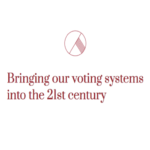Facebook is 14 years old, but it’s still constantly working on launching new features to keep it a viable force in a social media landscape crowded with much younger platforms, such as Snapchat or Instagram (a platform Facebook eventually bought!). This is why it’s no surprise that they recently announced a new kind of content: 3D posts.
Early versions of 3D posts were first released in October, when Facebook announced that participants in the VR-based Oculus Medium sculpting platform or Facebook Spaces hangouts could share objects they created on their timelines for non-VR users to interact with. And just earlier this month, Facebook announced broader 3D post capabilities, including support for industry-standard gITF 2.0 file formats and new API endpoints for designers.
As the expertise and technology-based burdens required to make 3D posts continue to decline, the average South Asian user should expect to see a lot more 3D content on the platform. And brands, who are always competing with each other to drive social media engagement with attention-getting new tools, have already proven that they’re invested in 3D. Facebook unveiled the tool with 3D posts created by Lego, Sony, and other companies. Now that 3D posting is truly here, how can brands use it to impact South Asian consumer experiences?
Increase Customer Interaction
3D posts integrate customer interaction into their design so naturally that it’s easy to overlook this powerful capability. Most Facebook posts are static images and text, and users have a defined range of tools for responding–clicking “like,” posting a comment, sharing on their own profile, etc. Most Facebook users don’t interact with most of the content they see, scrolling past unless a post or picture particularly resonates.
But much like a display model in a brick-and-mortar storefront, 3D posts invite customer interaction by design. Facebook browsers scrolling past a 3D object face absolutely no friction when it comes to turning the object around and investigating it–they don’t have to compose a response, or navigate away from their feed, or decide if they want the content to show up on their own page. They’re simply drawn in by curiosity, and indulging their curiosity is as easy as pushing a demo button in a physical store.
Leverage Consumer-Generated Content
Most of the marketing world already knows about branded filters on Snapchat, which let app users play around with fun effects for their own pictures. Gatorade, for example, earned over 160 million impressions with their Superbowl-themed filter, which let users add the game’s traditional Gatorade dunk to selfies. 3D modeling opens up new possibilities for combining branding with customer-created content. Jurassic World, for example, created a 3D version of a dinosaur in the upcoming film and now lets customers add her to their Facebook camera pictures.
And customer-generated content can go even further than overlays of filters or objects. The wild success of bitmoji shows that social media users enjoy customizing the digital objects in their ecosystem. Popular toy company Funko allows users to create a “Funko” version of themselves and save it to their profiles. As 3D content becomes more and more prevalent in the branding world, companies could similarly provide user-friendly 3D platforms to create virtual objects that reflect both company branding and customer creativity.
Model Products
Ecommerce is growing by leaps and bounds, but one of the biggest disadvantages it still faces compared with brick-and-mortar stores is the difficulty of giving customers an accurate sense of what products actually look and feel like. The result can be an absurd disconnect between customer expectation and reality–see Good Housekeeping’s collection of anecdotes about furniture-buyers accidentally buying dollhouse desks and chairs. Awareness of that disconnect can keep buyers from taking the plunge and clicking “buy.”
3D posts offer brands a way to lessen that disconnect. Wayfair has already made the first move and created a 3D rendering of a table for sale, allowing customers a complete sense of its scale and style. For clothing companies, this could be a particularly powerful branding tool.
Bridal wear company Azazie, for example, could provide 3D models of their bridesmaid and wedding gowns. Their standard customer base is on a deadline–no one wants to discover that their web-purchased dress doesn’t look right when it arrives a few days before the wedding–and such a tool could significantly increase customers’ confidence that the gowns they’re buying are in fact what they want. As 3D modeling improves, we could even see gowns modeled for different sizes and body shapes.
Final Thoughts
3D modeling is an exciting artistic tool, whether you’re a video-game designer, a movie maker, or now, a marketer. As 3D posts become increasingly easy to produce and share on Facebook (and perhaps, not too far in the future, other platforms), brands can’t afford to miss out on the exciting opportunities they present.
Is your company planning on designing any 3D posts?








